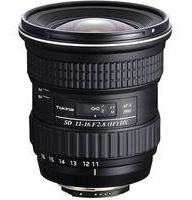7 advantages of Kit Lens Camera which is often Underestimated
Camera Lens Kit Lens7 advantages of Kit Lens which is often Underestimated
After we know the type of some camera lens in the previous post (read in here) in this article we have to explain about the advantages of kit lens camera. And this is 7 advantages of Kit Lens Camera which is often Underestimated.
1. Have a Classic Focal length 4 in 1 Lens
Although tampangnya geeky, a kit lens has a focal length of 4 classic, in other words a kit lens could replace the four lens prime/fixed at once. Four classic focal length above is: 28 mm (wide-angle), 35 mm (medium wide), 50 mm (normal) and 85 mm (portrait).
The figure above is the focal length of numbers to a full frame camera, focal length equivalent to APSC cameras are respectively: 18 mm, 23 mm, 35 mm and 56mm.
And this time the majority of the kit lens for the camera APSC sold has a range of 18 – 55 mm. Another option is kit lens with a range of widths up to approach the medium telephoto: 18 – 105 mm or 18 – 135 mm. Likewise, when you buy a full frame camera, kit lenses are most commonly on offer is 24 – 105 mm.
Indeed the kit lens will not offer the most powerful openings, large numbers of f/3.5, but at least you get the four basic functions of the lens (or more) in a single lens kit.
2. Small and light
The most frequent kit lens sold bundled with a camera lens is the APSC 18 – 55 mm. Lens it does seem plain, but keep in mind that he's also very lightly and Petite.
For example, the kit lens Canon 18 – 55 f/3.5 – 5.6 IS STM only weighs 200 grams and maximum length of only 6 cm.
While similar lens specs semi pro, Canon 17 – 55 mm f/2.8 IS USM weighing 650 grams and maximum length 11 cm. Almost 2 times as long and three times heavier.
Same for Nikon. The Nikon kit lens 18 – 55 mm f/3.5 – 5.6 has a weight of 195 grams and maximum length of 6 cm. Compare with Nikon 17 – 55 mm f/2.8 G DX does it weigh 755 grams and maximum length 11 cm.
If anyone is running away or will travel tours, weights and measures this will really be grateful.
3. The Filter is cheaper
Lens filters still useful, even though we live in the digital age. And for this law applies a filter: the greater the diameter of the filter more expensive price.
The basic kit lens as we call on top has a small physical size, automatically requires a smaller filter size anyway.
Kenko Pro – 1 Filter CPL (circular polarizer) useful to prune reflection when we photograph shiny surface (air, glass etc.), measuring 77mm (pro) can cost above $100. Compare with the same filter for the kit lens (diameter of 58mm), it was not until $60.
4. Has Minimum Focusing Distance which is nice
Minimum Focusing Disctance, most notably reviewed in this article is a measure of the ability of the lens to photograph the object distance is near. We do not hope to match the capabilities of the macro lens, but the kit lens is surprisingly have MFD is better compared to the more expensive lens.
Both of the above lenses (18 – 55 mm f/3.5 – 5.6 Canon or Nikon owned both) have the ability to focus at close range better than lenses 17 – 55 mm f/2.8 which is much more expensive.
5. Only buy we need
There is an expression that means so much in photography (and other fields): when we are confused what to buy, it means we are not/not yet needed. When you've been using the kit lens in sufficient time period, you will simply know the ins and outs of photography. You also know the more personal taste in photography.
Mandatory see: 20 Fantastic Photos with Kit lens
When you know that your taste and passion is the photo of the landscape and you're "grown" beyond the capabilities of the lens kit, buy a special lens view: 10 – 22 mm or 12-24 mm.
6. Cheap is not necessarily Ugly
If you studied economics in school, more or less knew with economies of scale. Well, the kit lens can be sold very cheap because the manufacturers produce the kit lens in a very much so that production costs can be pressed and consequently the cost of making him cheap.
7. Savings, could be used Buy Another
All the stores selling the kit lens with a very cheap price as we bought it together with the camera.
As an illustration, if we purchase the current Nikon D3200 + kit lens 18 – 55 mm, the total purchases of both is $500. But when we buy the D3200 Nikon camera (body only) it costs already $450. so the lens kits are "only" valued at $50. Whereas when buying 18 – 55 separately, this lens is priced at $160.














